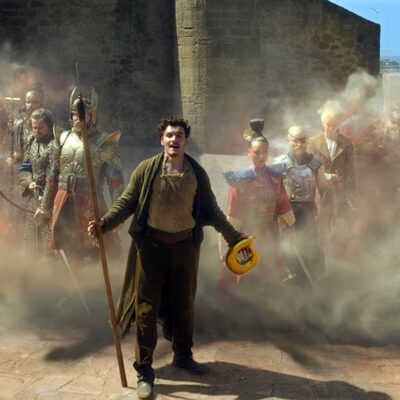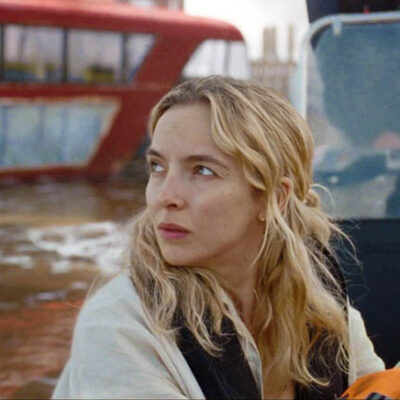By KEVIN H. MARTIN

Director Tim Burton had a small green-suited performer stand in for CG Dumbo on set so the actors could seem to physically interact with the character. (Photo: Jay Maidment) All images © Disney Enterprises Inc.
Dumbo first took flight in the pages of an illustrated children’s book, before Walt Disney selected it as an inexpensive follow-up to a pair of costly (and at that point not yet profitable) animated features released in 1940, Pinocchio and Fantasia. The tale of an ostracized baby circus elephant who becomes the big top’s star attraction when it’s discovered that by flapping his ears, he can fly, Dumbo warmed hearts for multiple generations, spanning four theatrical reissues as well as strong success in home video, while the ‘Dumbo the Flying Elephant’ ride has become a staple at the various Disney theme parks.
An animated sequel was announced in 2001 and quietly canceled a few years later, so it was not until 2014 that the live-action remake secured approval, with director Tim Burton coming on board the following year. In the film, this little elephant not only rejuvenates the circus’ business, but draws the attention of one V.A. Vandevere (Michael Keaton), who intends to feature Dumbo in his spectacular Dreamland facility, where some things wicked lie beneath.
Burton selected Richard Stammers (Prometheus, The Martian) as his VFX supervisor. “Tim’s original brief was that this be an expressionist movie,” Stammers recalls. “We needed to approach realism, but you can’t go too far in that direction because his take always has a heightened reality that won’t work with a documentary look, [resulting in] the constant striving for us to maintain visual credibility while also incorporating Tim’s stylistic needs.”
Before overseeing the contributions of several VFX vendors, Stammers, along with key production leads, re-screened the original cartoon. “That was mainly to see how the emotions played during key character moments,” he reports. “There are certainly aspects and qualities of the animation in the original that we wanted to carry over, but most of the time our animation had real elephant behavior as a starting point. There was a ton of great reference provided that allowed us to study both grown and baby elephants, seeing exactly how they move.



















